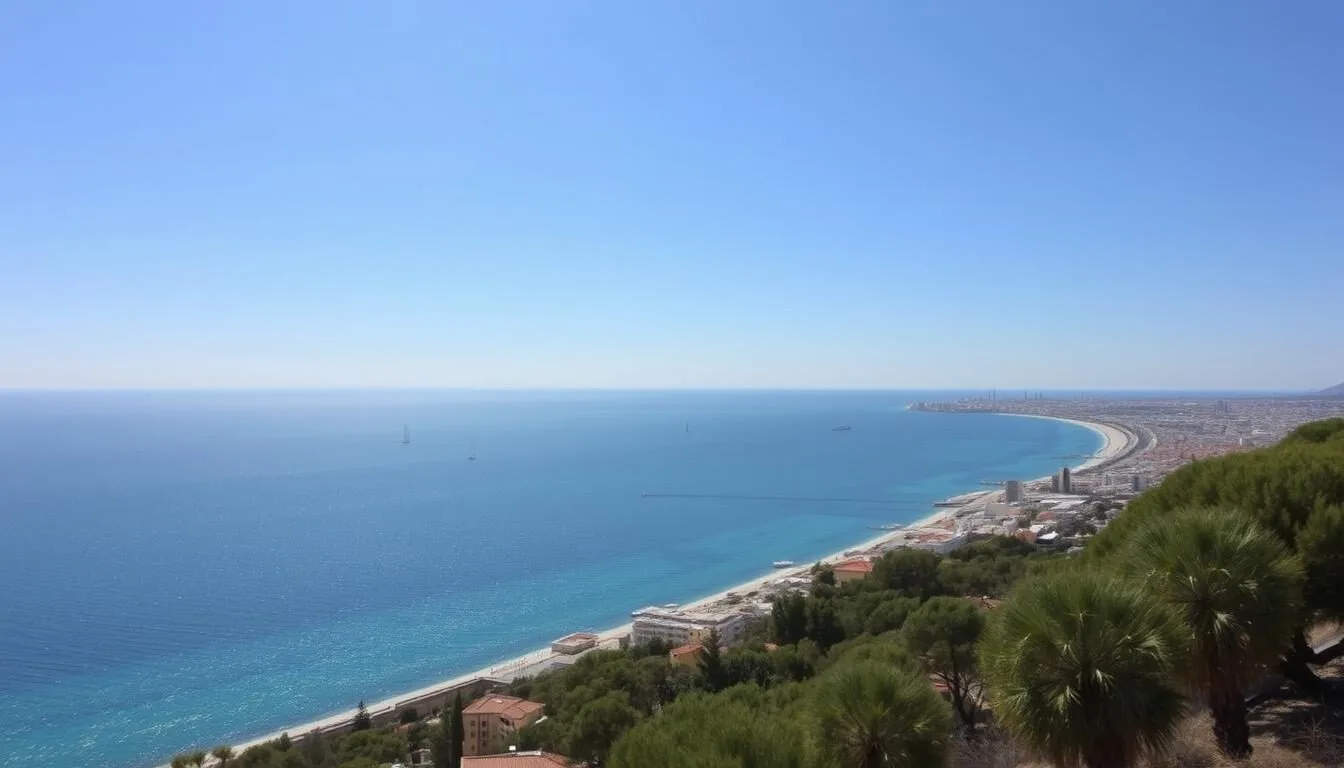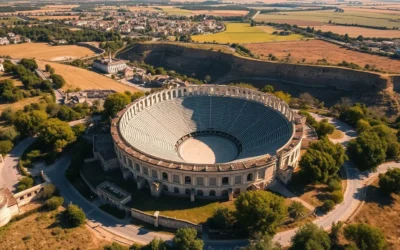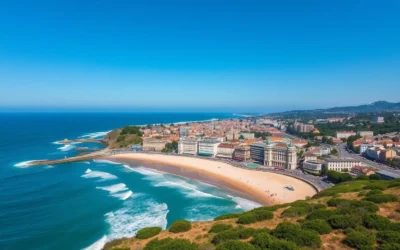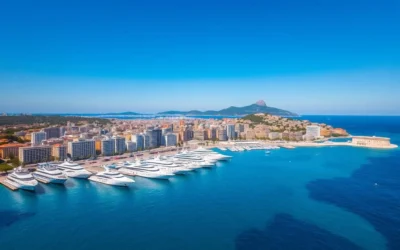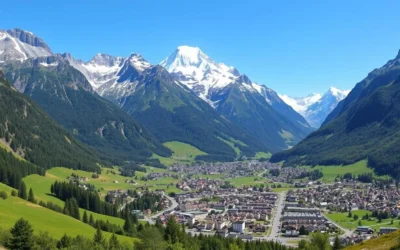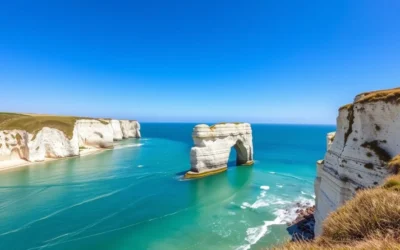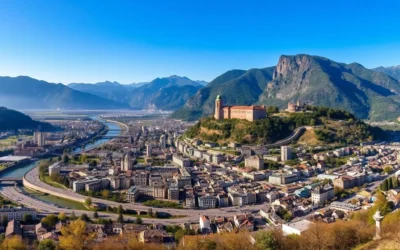Did you know Marseille enjoys over 300 days of sunshine annually, making it France’s sunniest major city? This Mediterranean gem boasts a climate that draws visitors year-round, but timing your visit can make all the difference between a pleasant getaway and an unforgettable experience. As France’s oldest city and second-largest urban center, Marseille offers a unique blend of historical charm and coastal beauty—all influenced by its distinctive seasonal patterns.
Getting There & Planning Your Journey
Marseille is easily accessible by air through Marseille Provence Airport (MRS), which welcomes flights from major European cities and international destinations. The airport is located about 27 km (17 miles) northwest of the city center, with convenient shuttle buses and taxis available for transfers.
For travelers already in Europe, Marseille is well-connected by France’s high-speed TGV rail network. Direct trains from Paris reach Marseille in just over 3 hours, while connections from other major French and European cities are readily available.
Ready to Book Your Trip to Marseille?
Find the best flight deals to start your Marseille adventure!
When planning your journey, consider that Marseille’s Mediterranean climate creates distinct seasons, each offering unique experiences. The city’s coastal location means weather can change quickly, so checking forecasts before your trip is always advisable.
Best Time to Visit & Weather Tips
Marseille’s Mediterranean climate delivers hot, dry summers and mild, relatively wet winters. The city experiences distinct seasonal changes that can significantly impact your travel experience. Let’s break down what to expect throughout the year:
Summer (June-August)
Weather Overview: 26-30°C (79-86°F), minimal rainfall (less than 20 mm/0.8 in monthly)
What to Wear: Light, breathable clothing, sun hat, sunglasses, swimwear, light jacket for evenings
Things to Do:
- Swimming and sunbathing at city beaches
- Boat trips to Calanques National Park
- Outdoor dining at Old Port restaurants
- Summer festivals and outdoor concerts
Pros
- Perfect beach weather
- Vibrant outdoor nightlife
- Longest daylight hours
Cons
- Peak tourist crowds
- Higher accommodation prices
- Potential heatwaves
Autumn (September-November)
Weather Overview: 15-25°C (59-77°F), increasing rainfall (40-80 mm/1.6-3.1 in monthly)
What to Wear: Light layers, light jacket or sweater, comfortable walking shoes
Things to Do:
- Wine harvest festivals and tastings
- Hiking in Calanques (trails reopen after summer fire risk)
- Cultural events and museum visits
- Exploring markets with seasonal produce
Pros
- Fewer tourists
- Pleasant temperatures
- Lower accommodation rates
Cons
- Increasing chance of rain
- Shorter daylight hours
- Sea temperature cooling
Winter (December-February)
Weather Overview: 7-13°C (45-55°F), highest rainfall (50-70 mm/2-2.8 in monthly)
What to Wear: Warm layers, waterproof jacket, scarf, comfortable shoes
Things to Do:
- Christmas markets and festivities
- Museum and gallery visits
- Enjoying sea urchin season at restaurants
- Exploring historic sites without crowds
Pros
- Lowest tourist numbers
- Best hotel deals
- Authentic local experience
Cons
- Cooler temperatures
- More rainy days
- Some attractions have limited hours
Spring (March-May)
Weather Overview: 12-22°C (54-72°F), moderate rainfall (30-50 mm/1.2-2 in monthly)
What to Wear: Light to medium layers, light jacket, comfortable walking shoes
Things to Do:
- Exploring blooming gardens and parks
- Hiking in the surrounding countryside
- Spring festivals and cultural events
- Boat trips with fewer crowds
Pros
- Blooming landscapes
- Moderate tourist numbers
- Pleasant temperatures
Cons
- Variable weather conditions
- Some rain showers
- Sea still cool for swimming
Best Time to Visit Marseille
The ideal months to visit Marseille are May to early July and September to early October. During these periods, you’ll enjoy warm, pleasant temperatures perfect for sightseeing and outdoor activities, while avoiding both the intense summer heat and the peak tourist crowds of July and August.
If beach activities and swimming are your priority, plan your visit for late June through August when sea temperatures are most comfortable. For cultural exploration and hiking, the spring and fall shoulder seasons offer the best balance of good weather and manageable visitor numbers.
Months to avoid if possible: November tends to be the rainiest month, while July and August see the highest tourist numbers and accommodation prices.
Getting Around Locally
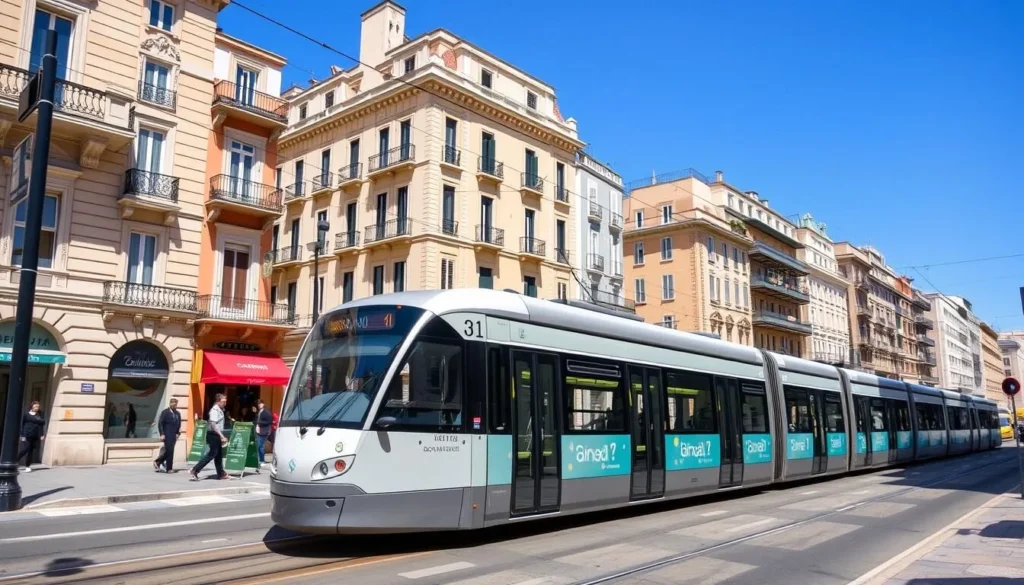
Marseille offers excellent public transportation options for visitors. The RTM (Régie des Transports Métropolitains) operates an integrated network of two metro lines, three tram lines, and numerous bus routes that cover most tourist areas. A 24-hour pass costs around €5.20 and provides unlimited travel on all services.
For exploring the picturesque calanques (coastal inlets) and nearby villages, renting a car gives you the most flexibility. The road network around Marseille is well-maintained, though parking in the city center can be challenging and expensive.
Explore Marseille at Your Own Pace
Find the best rental car deals for your Marseille adventure
Marseille is also a very walkable city, especially around the Old Port and Le Panier district. For coastal exploration, seasonal boat services connect the Old Port with the Frioul Islands and Calanques National Park from April to October.
Where to Stay

Marseille offers accommodation options for every budget and preference, with distinct neighborhoods providing different experiences:
Vieux Port (Old Port)
The heart of Marseille and ideal for first-time visitors. Staying here puts you within walking distance of major attractions, restaurants, and shopping. Expect higher prices, especially during summer months, but the convenience and atmosphere are worth considering.
Le Panier
Marseille’s oldest quarter features narrow winding streets, colorful buildings, and artistic charm. This historic district offers boutique hotels and charming B&Bs, perfect for travelers seeking character and authenticity.
La Corniche
This scenic coastal road area offers upscale accommodations with stunning Mediterranean views. Ideal for those seeking a quieter stay while remaining close to beaches and the city center.
Noailles & Cours Julien
These central neighborhoods offer a more local experience with vibrant markets, street art, and diverse dining options. Accommodation tends to be more affordable here, making it popular with budget-conscious travelers.
Find Your Perfect Stay in Marseille
Browse hotels, apartments, and B&Bs across all Marseille neighborhoods
For the best rates, consider visiting during shoulder seasons (May-June or September-October) when you’ll find good weather and more reasonable prices. Book well in advance if planning a summer visit, as the best properties fill quickly during peak season.
Dining & Local Cuisine
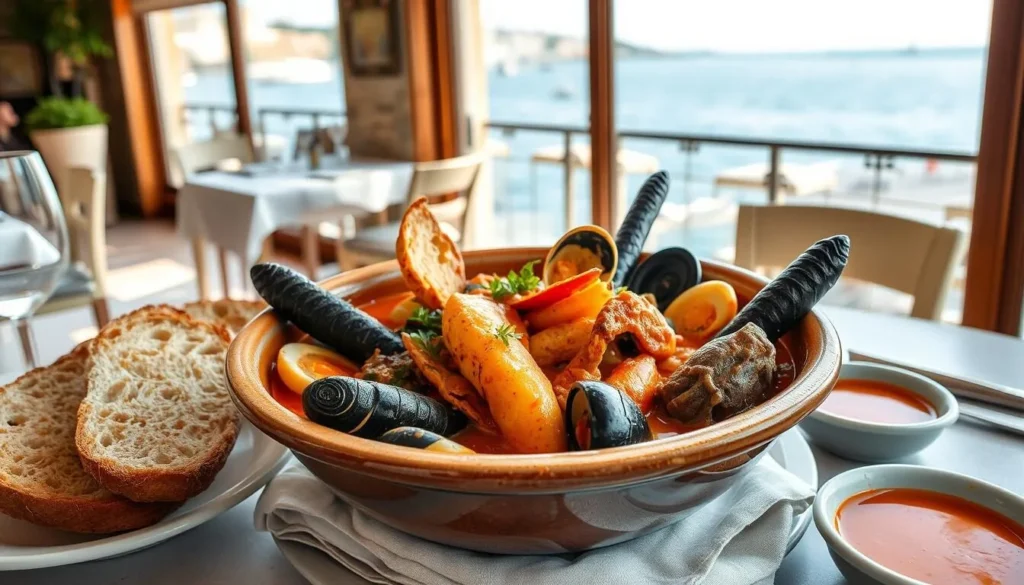
Marseille’s culinary scene is a delicious reflection of its Mediterranean location and multicultural heritage. The city’s cuisine is dominated by fresh seafood, olive oil, garlic, and aromatic herbs.
Must-Try Local Specialties
- Bouillabaisse – Marseille’s iconic fish stew, traditionally made with at least three types of local fish, served with rouille (a garlicky saffron mayonnaise) and crusty bread
- Navettes – Orange blossom-flavored cookies shaped like little boats, a Marseille specialty especially popular during Candlemas in February
- Panisse – Chickpea flour fritters, a popular street food
- Pastis – The anise-flavored aperitif that’s synonymous with Provence
- Pieds et Paquets – A traditional dish of sheep’s trotters and stuffed tripe, typically enjoyed in autumn
Where to Eat by Season
Summer: Dine at outdoor terraces along the Old Port or enjoy fresh seafood at beachside restaurants. Many establishments offer special summer menus featuring lighter fare.
Fall: This is the season for hearty Provençal stews and mushroom dishes. Look for restaurants serving seasonal game and freshly harvested produce.
Winter: Sea urchin season runs from January to March, with many seafood restaurants hosting special oursin menus. Winter is also perfect for experiencing traditional bouillabaisse in a cozy setting.
Spring: As markets fill with fresh spring produce, restaurants update their menus with seasonal vegetables and lighter dishes. This is a great time to experience Marseille’s farm-to-table offerings.
For the most authentic dining experiences, venture away from the tourist-heavy Old Port area and explore neighborhood restaurants in areas like Noailles, known as the “belly of Marseille” for its vibrant food market and diverse eateries.
Attractions, Sightseeing & Activities

Marseille offers a wealth of attractions that can be enjoyed year-round, though some experiences are better suited to specific seasons. Here’s what not to miss:
Year-Round Highlights
- Basilique Notre-Dame de la Garde – This iconic hilltop basilica offers panoramic views of the entire city and Mediterranean Sea
- Le Panier – Marseille’s oldest quarter, with narrow streets, colorful buildings, and artistic charm
- MuCEM (Museum of European and Mediterranean Civilizations) – A stunning contemporary museum connected to the historic Fort Saint-Jean
- Vieux Port (Old Port) – The historic harbor remains the beating heart of Marseille
- Château d’If – The island fortress made famous by Alexandre Dumas’ “The Count of Monte Cristo”
Seasonal Activities
Spring & Fall: These are the ideal seasons for hiking in the Calanques National Park, with comfortable temperatures and fewer restrictions. The dramatic limestone cliffs and turquoise waters make for unforgettable scenery.
Summer: Enjoy Marseille’s beaches, boat trips along the coast, and vibrant outdoor festivals. The Frioul Islands make a perfect day trip, accessible by regular boat services from the Old Port.
Winter: Focus on indoor attractions like the Marseille History Museum, the Fine Arts Museum, and the Cantini Museum. Winter also offers a more authentic experience of local traditions and festivals.
Discover the Best of Marseille
Book guided tours, skip-the-line tickets, and unique experiences
Museums, Cultural Spots & Festivals

Marseille’s cultural calendar is packed year-round, with each season offering unique festivals and events that showcase the city’s rich heritage and contemporary arts scene.
Key Museums & Cultural Venues
- MuCEM – Open year-round, this landmark museum explores Mediterranean civilizations through impressive exhibitions
- La Vieille Charité – A former 17th-century almshouse now housing museums and exhibition spaces
- FRAC (Regional Contemporary Art Fund) – For those interested in cutting-edge art
- Musée des Beaux-Arts – Housed in the left wing of the Palais Longchamp, featuring works from the 16th to 19th centuries
- Musée d’Histoire de Marseille – Tracing the city’s 26-century history through archaeological finds and interactive exhibits
Seasonal Festivals & Events
Spring:
- Festival de Marseille (May-July) – Contemporary dance, music, and theater performances
- Festival de Musique Sacrée (April) – Sacred music concerts in historic venues
- Massilia Cup (April) – Major sailing regatta in the Bay of Marseille
Summer:
- Marseille Jazz des Cinq Continents (July) – International jazz festival featuring artists from five continents
- FID Marseille (July) – International documentary film festival
- Festival MIMI (late August-early September) – Experimental music festival
Fall:
- Fiesta des Suds (October) – World music festival
- Foire Internationale de Marseille (late September) – Large trade fair with regional products
- Foire aux Santons (November-December) – Traditional Provençal nativity figure fair
Winter:
- Christmas Markets (December) – Traditional markets throughout the city
- Les Oursinades (January-February) – Sea urchin festivals in nearby coastal towns
- La Chandeleur (February) – Religious festival featuring traditional navette cookies
Sports, Nature & Outdoor Experiences

Marseille’s exceptional natural setting between mountains and sea creates abundant opportunities for outdoor activities throughout the year, though availability varies by season.
Hiking & Nature
The crown jewel of outdoor Marseille is undoubtedly Calanques National Park, with its dramatic limestone cliffs and hidden coves. Important note: Many hiking trails in the Calanques are closed during summer (usually July-August) due to fire risk. Spring and fall offer the best hiking conditions with comfortable temperatures and open trails.
Other excellent hiking areas include:
- Massif de l’Étoile – The mountain range north of the city
- Frioul Islands – Offering easy walking trails with beautiful views
- Marseilleveyre – Coastal hills with panoramic vistas
Water Activities
The Mediterranean coastline provides endless opportunities for water sports, with peak season from June to September:
- Swimming – City beaches like Plage du Prado and Plage des Catalans are popular in summer
- Sailing – The Bay of Marseille hosts several regattas, with sailing schools offering lessons year-round
- Kayaking & Paddleboarding – Explore the calanques from the water (best April-October)
- Diving – Discover underwater caves and marine life in the Mediterranean
Spectator Sports
Marseille has a passionate sports culture, with Olympique de Marseille (OM) football club at its center. Catching a match at the Vélodrome Stadium provides an unforgettable glimpse into local culture. The football season runs from August to May.
The city also hosts major sailing competitions throughout the year, including the SNIM (Semaine Nautique Internationale de Méditerranée) in April.
Explore Marseille by Sea
Discover Mediterranean cruises featuring Marseille as a port of call
Safety, Etiquette & Local Customs
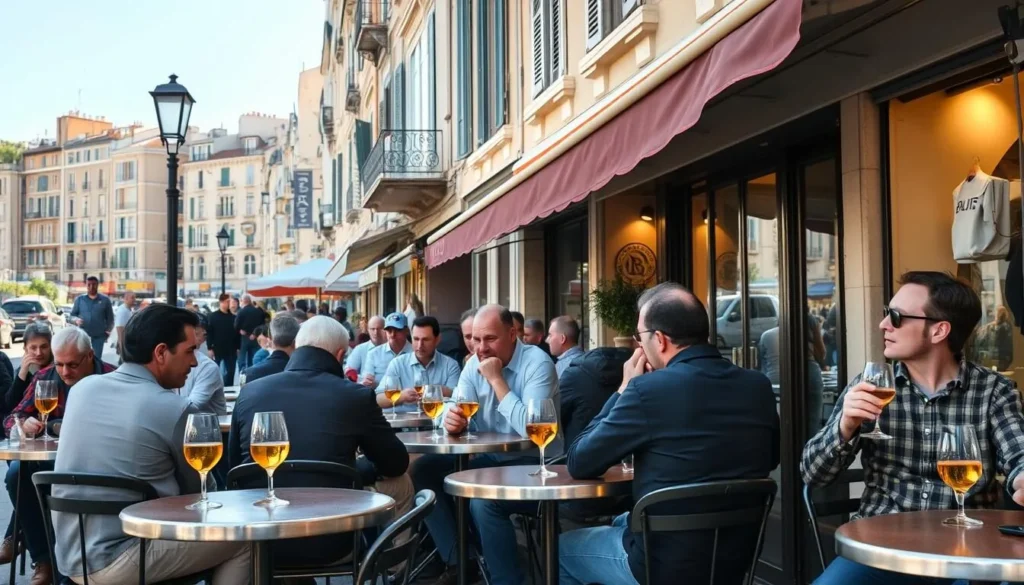
Marseille is generally safe for tourists, though like any major city, it has areas that require additional caution. The city has worked hard to improve its safety reputation in recent years.
Safety Tips
- Be vigilant against pickpocketing, especially around the Old Port, train station, and on public transportation
- Avoid the northern districts (13th-16th arrondissements) unless you have a specific reason to visit
- Take standard precautions at night, particularly in quieter areas
- During summer hiking, carry plenty of water and check fire risk warnings before entering the Calanques
- Be aware of strong Mistral winds that can occur year-round but are most common in winter and spring
Local Etiquette
Marseille has a relaxed Mediterranean culture, but observing some basic etiquette will enhance your experience:
- Greet shop owners and restaurant staff with “Bonjour” (or “Bonsoir” in the evening) when entering
- Basic French phrases are appreciated, though many people in tourist areas speak some English
- Tipping is not obligatory as service is included in restaurant bills, but rounding up or leaving a few euros for good service is common
- Dress code is generally casual, though beachwear should be confined to the beach
- Respect siesta hours (roughly 2-4pm) when some smaller shops may close
Local Customs
Marseille has a proud local identity distinct from the rest of France. The city embraces its multicultural heritage and Mediterranean connections. Locals are generally direct in communication and passionate about their city, football team, and cuisine.
Pastis, the anise-flavored aperitif, is more than just a drink—it’s a social ritual, typically enjoyed diluted with water in the late afternoon. Joining locals for this tradition can be a wonderful way to experience authentic Marseille culture.
Practical Travel Tips

Weather Preparation
- Pack sunscreen year-round, as Marseille’s UV index can be high even in winter
- Bring a light windbreaker regardless of season, as the Mistral wind can make evenings feel cooler
- In summer, a hat and water bottle are essential for sightseeing
- For winter visits, pack layers as temperatures can vary significantly throughout the day
Money & Payments
The euro (€) is the currency in Marseille. Credit cards are widely accepted in hotels, restaurants, and larger shops, though some smaller establishments may prefer cash. ATMs are readily available throughout the city center.
Language
While French is the official language, Marseille’s international character means you’ll find English spoken in many tourist areas, hotels, and restaurants. Learning a few basic French phrases will be appreciated by locals.
Opening Hours
Many shops and some attractions close for lunch (typically 12:30-2:30pm), especially in smaller establishments. Museums are often closed on Mondays or Tuesdays. During summer, some businesses may have extended evening hours, while in winter, closing times may be earlier.
Wi-Fi & Connectivity
Free Wi-Fi is available in many cafes, restaurants, and public spaces throughout Marseille. The city also offers free public Wi-Fi hotspots in popular areas like the Old Port and major squares.
Health & Medical
Pharmacies are widely available and can help with minor health issues. For emergencies, dial 15 for medical assistance or 112 for the European emergency number. Carry travel insurance that covers medical expenses.
Conclusion

Marseille offers a captivating blend of Mediterranean charm, rich history, and natural beauty throughout the year. By timing your visit to align with your preferred activities and weather conditions, you can experience this vibrant French city at its absolute best. Whether you’re drawn to the sun-drenched beaches of summer, the cultural richness of spring and fall, or the authentic local experiences of winter, Marseille rewards weather-savvy travelers with unforgettable experiences in every season. Start planning your perfect Marseille getaway today and discover why this Mediterranean gem has been captivating visitors for over 2,600 years.
Ready for Your Marseille Adventure?
Begin planning your perfect weather-savvy trip to this Mediterranean gem
The above is subject to change.
Check back often to TRAVEL.COM for the latest travel tips and deals.
